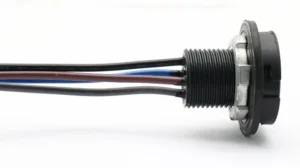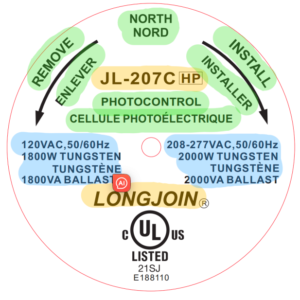Comprehensive Surge Protection for LED Photocell Lighting Sensor: A Must-Have for Urban Infrastructure
Introduce
There is no doubt that LED photocell lighting sensors have become one of the most popular devices in urban settings because they mitigate the loss of power and their automation has brought ease of operation. However, these sensors are prone to irregularities due to sudden electrical spikes. This can severely damage various components besides affecting their efficiency.
To protect these susceptible LED photocell lighting sensors against sudden electric surges, it is inevitable to install Surge Protective Devices (SPDs). These devices enhance the durability of the lighting system by safeguarding against damage. Let’s explore how a wholesome, multilayer surge protection mechanism has become an inevitable component of lighting systems in urban settings.
What Makes LED Photocell Lighting Sensors Prone to Damage?
A photocell sensor is an intricate combination of various sensitive parts. these include LEDs, circuits, and photocell switches. These components cannot handle sudden electrical surges beyond a limit and will get damaged. These spikes may be caused by sudden changes in power supply from the grid or by natural lightning incidents.
How Electrical Surges Can Affect LED Photocell Lighting Sensors

The highly sensitive components of this system can be damages by even the low-level surges in the electrical supply. As the time goes on, repeated surges can reduce the lifespan of photocells and also effect their performance. This entails an increased cost of maintenance as well. Here are some of the ways in which photocell sensors can be negatively impacted by sudden electrical spikes:
• Affecting Longevity
Incidents of electrical surges consistently reduce the life span of photocells as they are subjected to continuous damage with every surge.
• Dimming of Light Over Time

The damage done to the photocell switches may result in poor performance which sometimes becomes evident in the form of dimming of lights. Or the lights may flicker from time to time due to inconsistent performance of photocells.
• Increased Risk of Accidents
Unpredictable and unreliable lighting that flickers from time to time can cause accidents, especially in busy urban environments.
The Need for a Comprehensive Surge Protection
To make sure that your LED photocell lighting sensor keeps to its best over the years, and is protecting against damage, a wholesome surge protection mechanism needs to be adopted. It will help increase the longevity of the photocells and reduce maintenance costs. Here is what a multilayer surge protection system usually looks like:
• Primary Surge Protection
The foremost layer of protection against electrical surges comprises of Surge Protective |Devices (SPDs) that are integrated with the main electrical supply. They work by diverting the sudden high voltage so that it may not impact the LED photocell lighting system. Hence, they act as your primary safeguard system against sudden electrical surges.
• Secondary Surge Protection
Besides the primary safeguard mechanism, secondary protection is provided as an additional defense against an electrical hike. This is provided at the subpanels that distribute current to each lighting unit. This second layer ensures the protection of individual lighting circuits against local electricity hikes. It makes sure that each of the lighting unit in the network receives a stable supply of current without sudden fluctuations.
• Additional Protection for Photocells
Photocontrol sensors are among the most sensitive components of the LED lighting network and they act as the brain of the entire system. Hence they need additional protection against electrical surges. The surge protective devices are often installed directly with the photocell units to provide utmost protection. It helps maintain their performance and reduce maintenance costs incurred due to surge damage.
• Grounding of LED Lighting System
Grounding the LED photocell lighting system effectively ensures much needed protection against unwanted electrical surges. This helps divert the high voltage current and hence protect the lighting units. Make sure you periodically monitor the grounding system so that you may avoid any issues and it keeps providing protection in the long run.
• Periodic Maintenance
Surge protective mechanism also needs to be periodically maintained and checked for any issues. It helps improve their longevity and subsequentl, the durability and efficiency of the photocell lighting system is ensured. Whenever possible, keep testing the surge protective devices and test them for any issues. Similarly, make sure your grounding system is working fine. When all the protective layers are working as intended, you can significantly enhance the life span of your lighting system.
Conclusion
Comprehensive surge protection is indispensable for ensuring the reliable operation and longevity of LED photocell lighting systems in urban settings. By implementing a multi-layered surge protection strategy that includes primary and secondary surge protection, dedicated protection for photocell circuits, proper grounding and bonding, and ongoing monitoring and maintenance, municipalities and urban planners can mitigate the risks associated with electrical surges and maximize the performance of their lighting infrastructure. Investing in comprehensive surge protection not only protects valuable assets but also enhances safety, visibility, and sustainability in urban environments, ensuring that LED photocell lighting continues to illuminate cities with efficiency and reliability for years to come.






